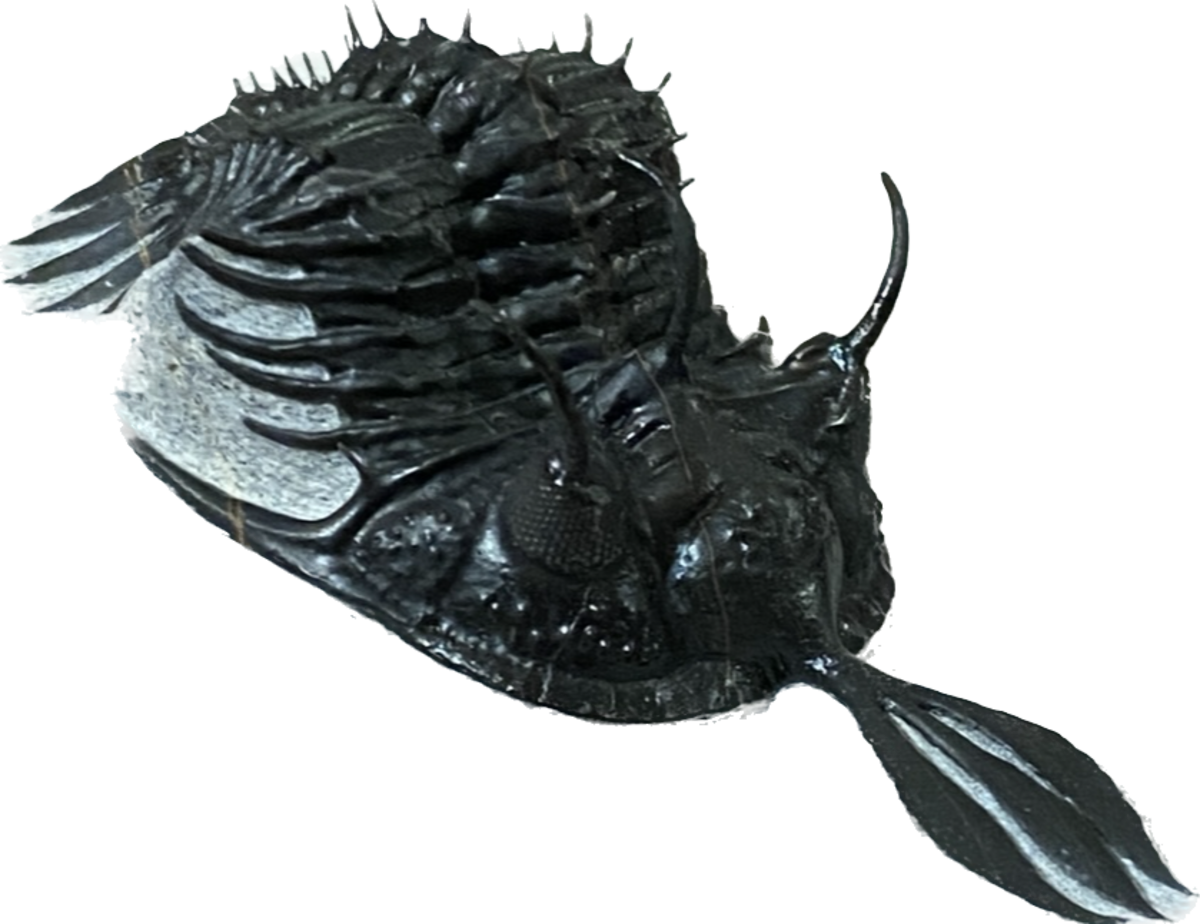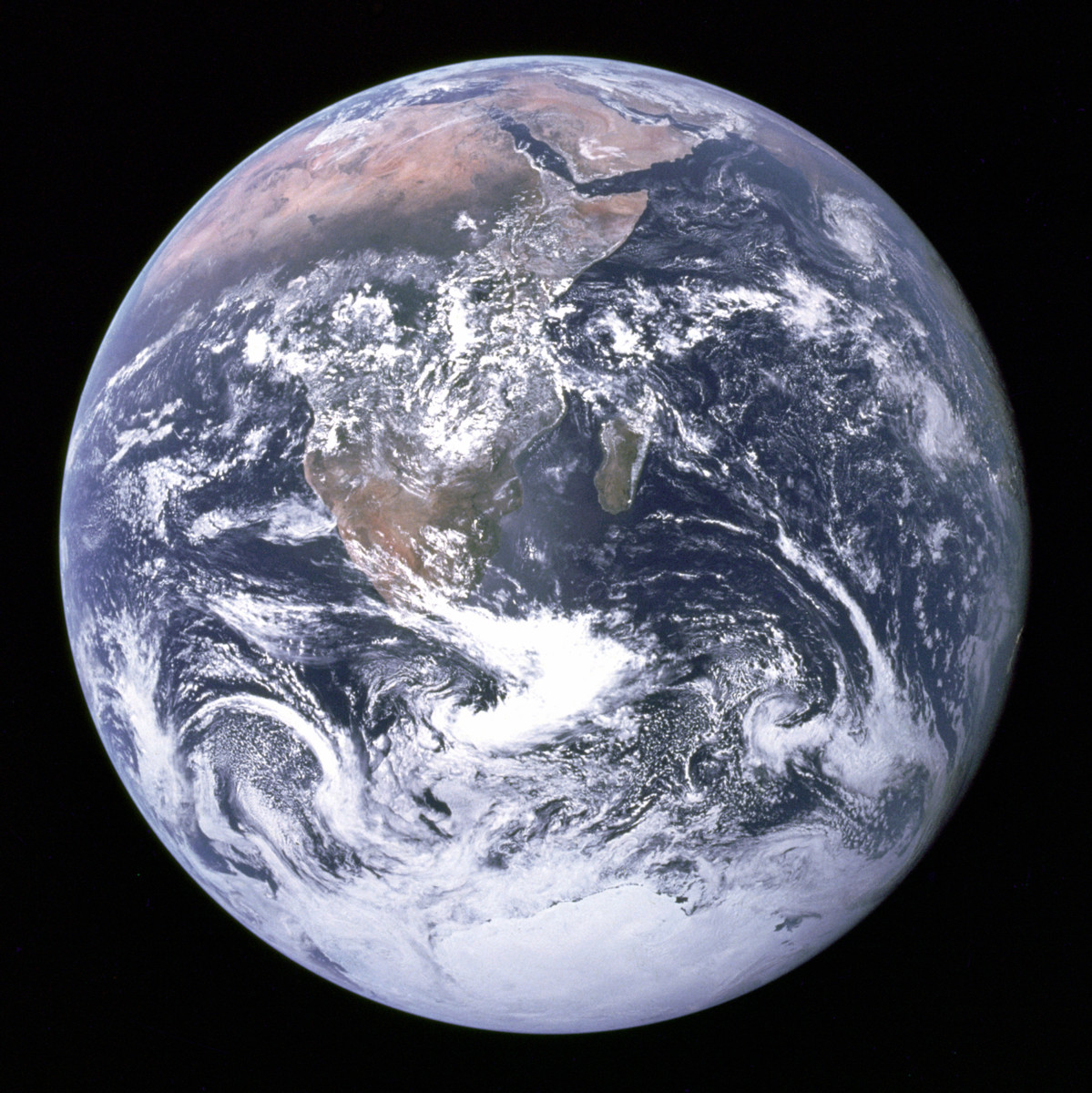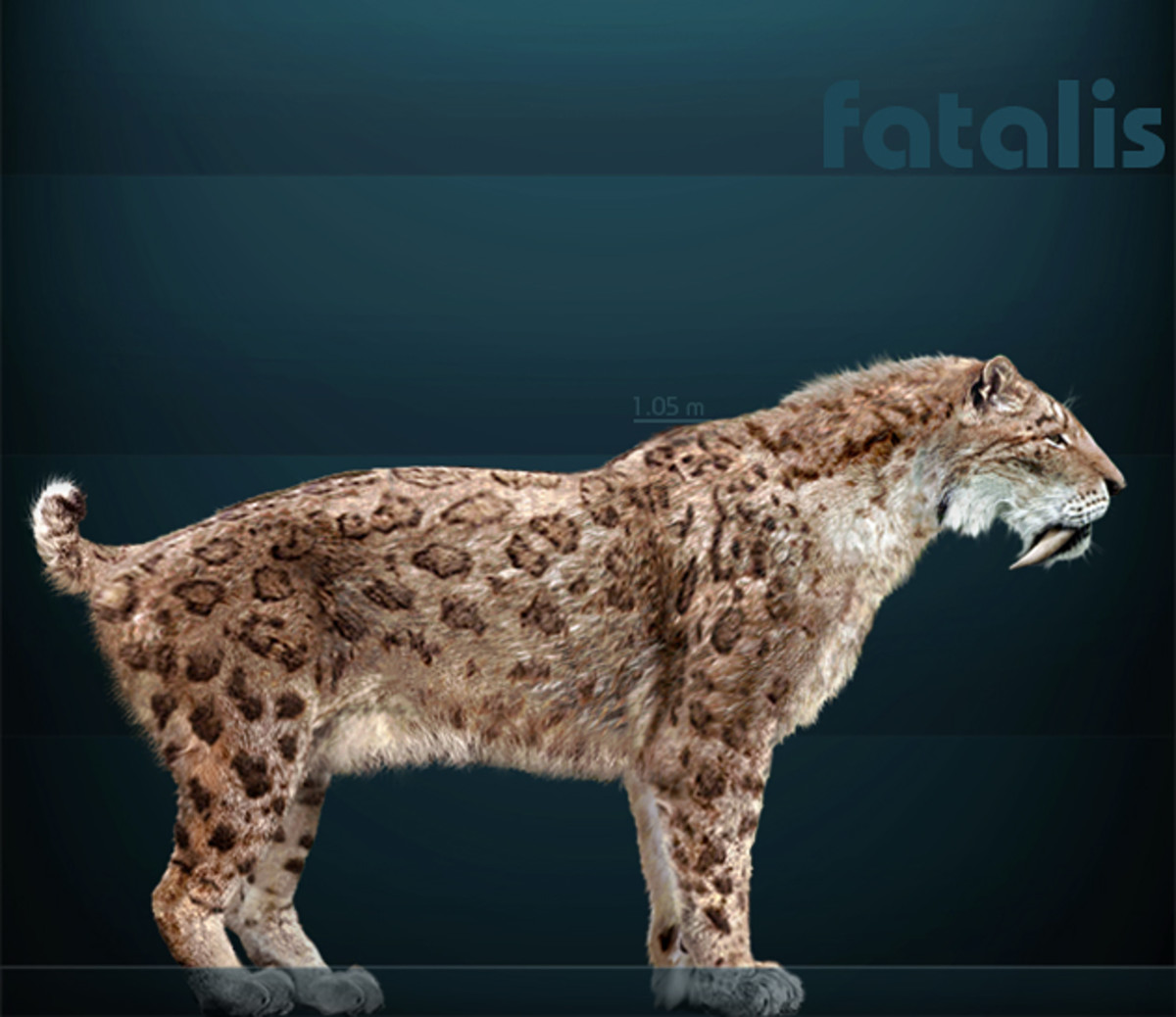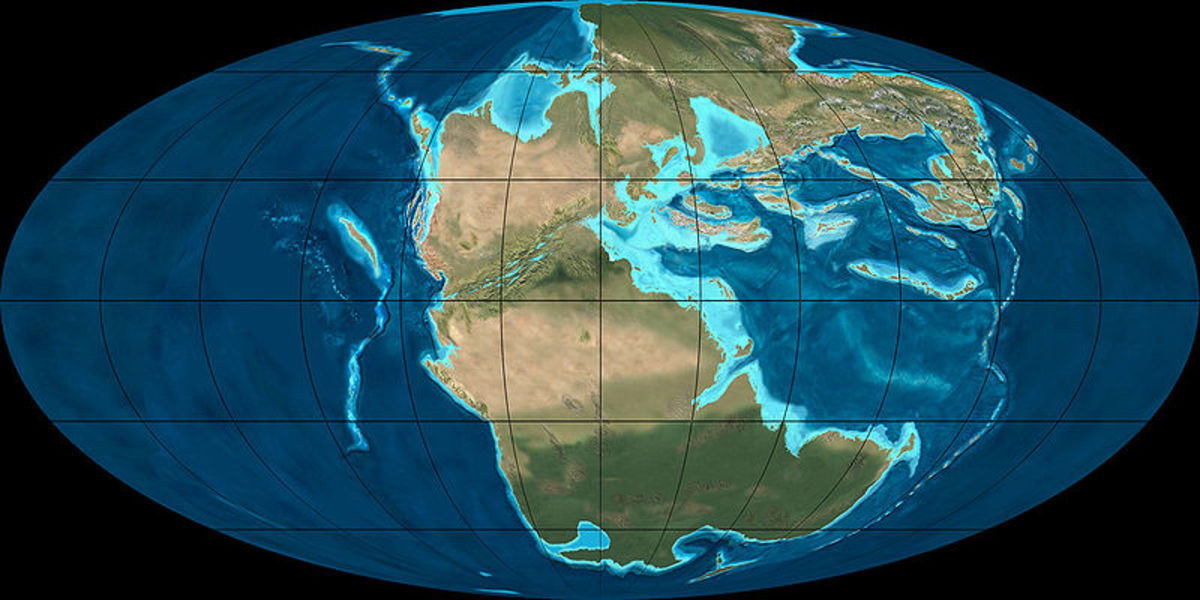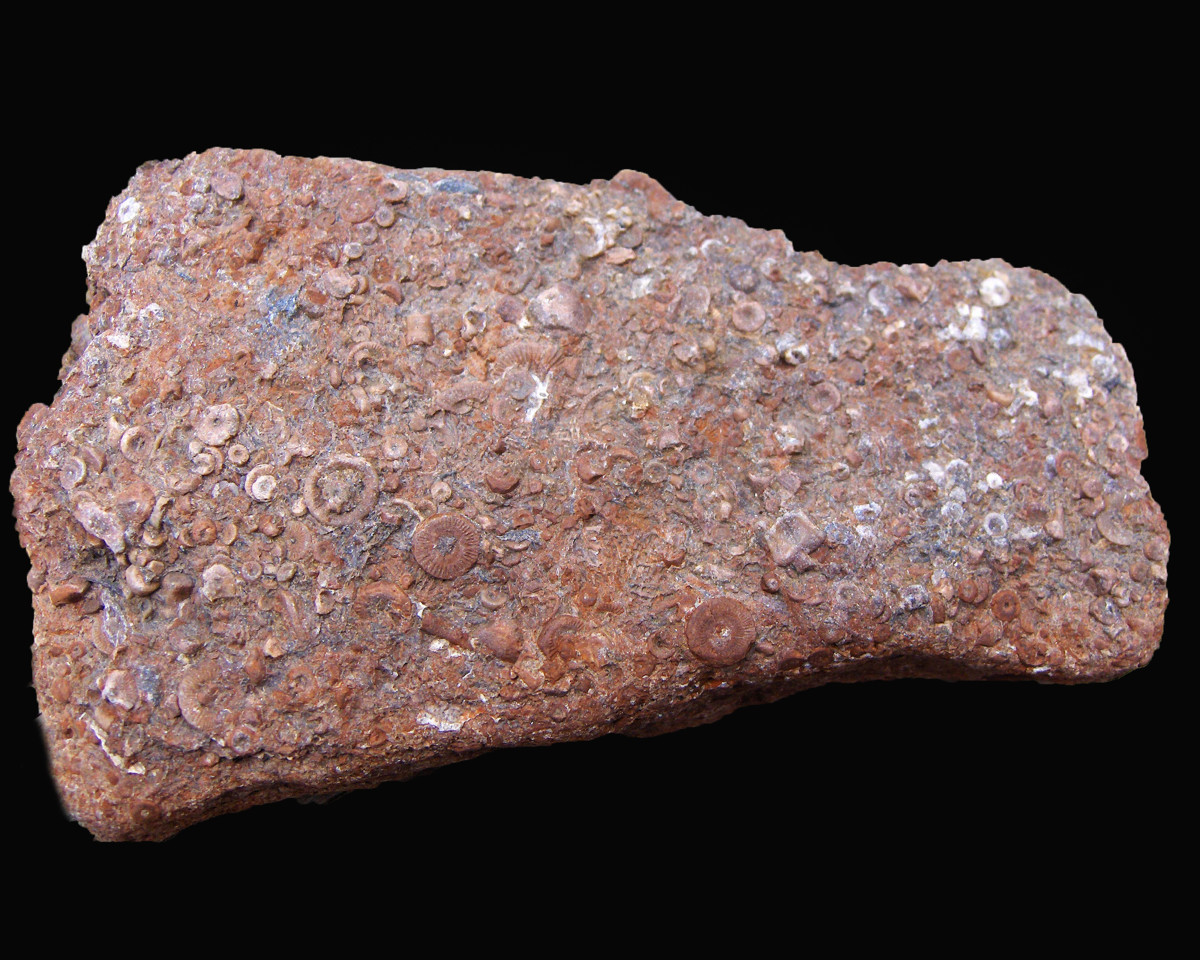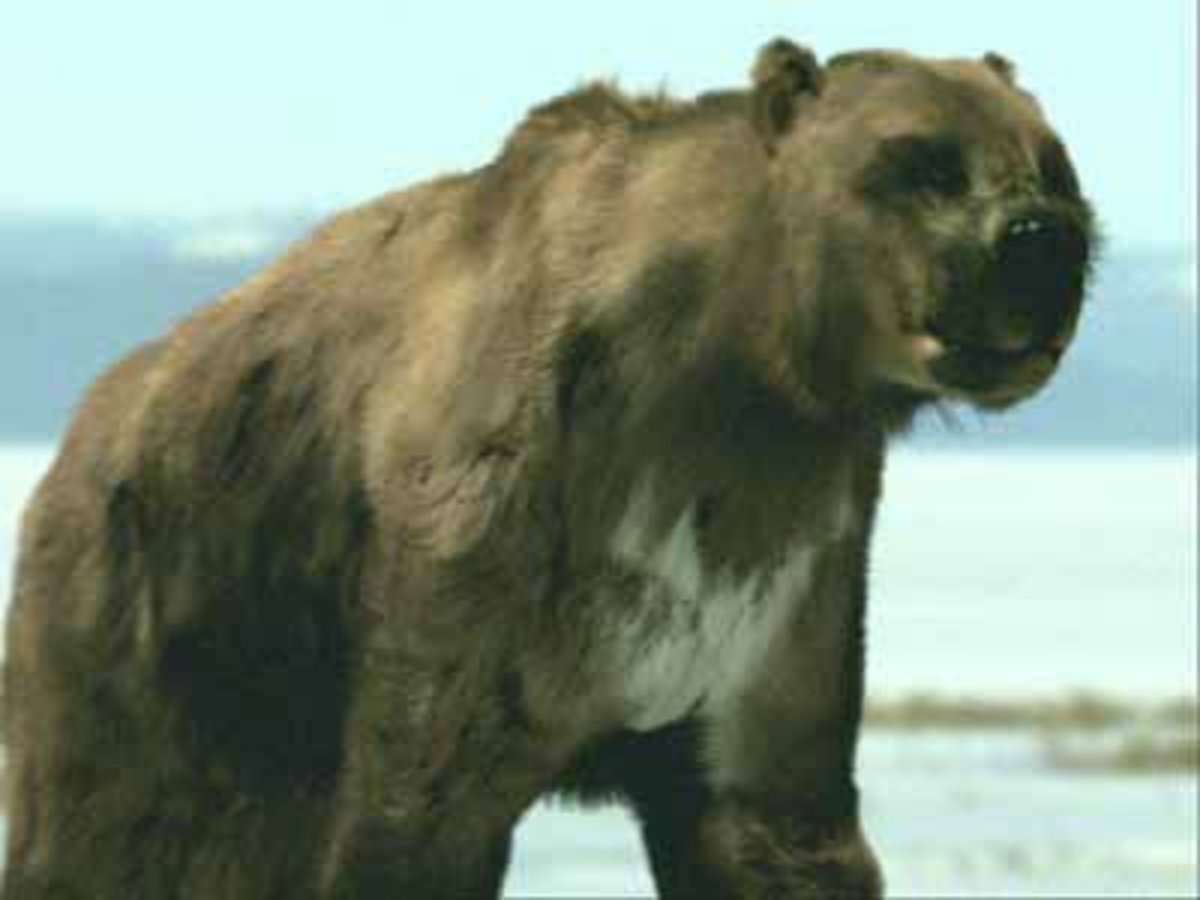"Frozen in Time": Researchers Uncover 500- Million-Year-Old Fossilized Embryos of Unknown Creature
First Published on April 19 2014
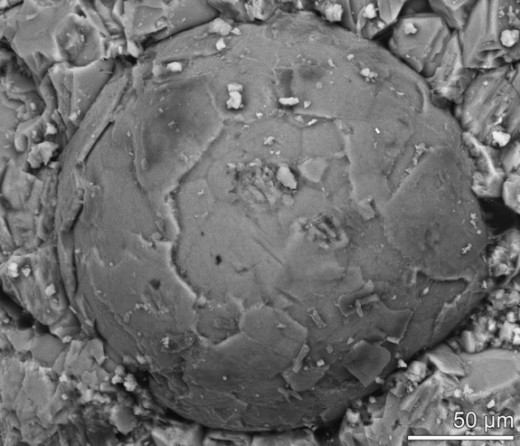
American researchers working in South China have dug up what they believe to be previously undiscovered embryos of an unidentified creature from billions of years ago, in a time period known as 'The Cambrian Explosion'. Researchers are hopeful that the find may assist them with future interpretation of evolutionary history.
The fossilized embryos appear as tiny spheres, some with polygonal patterns on their surface, and were found in Changyang, Hubei province of southern China by a team of researchers led by Jesse Broce of Virginia Tech and James Schiffbauer from The University of Missouri. The researchers believe that these fossils may date back 485 - 540 million years to the third stage of the Cambrian, the first geological period of the Paleozoic Era where evolution saw animals develop hard bodies parts, such as exoskeletons and shells, allowing humans to discover them in a somewhat preserved state compared to soft body tissues that generally didn't preserve so well. This period is also known as the Cambrian Explosion.
According to Schiffbauer its important to understand how these soft tissue fossils were preserved, because their chemical makeups can also offer clues about the nature of the organisms’ original tissues.
“Something obviously went wrong in these fossils,” Schiffbauer said. “Our Earth has a pretty good way of cleaning up after things die. Here, the cells’ self-destructive mechanisms didn’t happen, and these soft tissues could be preserved. While studying the fossils we collected, we found over 140 spherically shaped fossils, some of which include features that are reminiscent of division stage embryos, essentially frozen in time.”
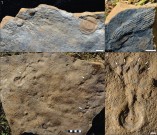
The researchers were forced to hand-chisel the rock into millimeter and centimeter sized pieces to reach the fossil surfaces, after the use of acid to dissolve the remains out of the limestone in China's Shuijingtuo formation resulted in some of the sphere becoming seriously damaged or destroyed. The fossilized embryos were then examined using a variety of microscopy and X-Ray techniques and equipment.
The organic compounds that once made up the embryos have preserved poorly and as a result have mostly mineralized and been completely lost or entirely replaced by calcite. The researchers found that most of the specimens incorporated a ball of calcite surrounded by a phosphate-rich envelope, believed to be the 'chorion' or 'fertilization envelope', an outermost membrane that covers the embryo.
The polygonal patterns that appear on some of the specimens have been interpreted by researchers as multicelled blastulas, which are embryos in an early stage of development. Researchers also noted that the sets of grooves in the calcitic spheroidal structure of some of the other specimens are "superficially similar to annulations" (or ring formations) on embryos of Markuelia, a worm like creature that lived during the Cambrian period.
The researchers say that the fossilized specimens are significantly smaller than other fossil embryos from the same time period, suggesting they may represent an organism not yet described. Researchers will attempt to identify the parents of the embryos and their evolutionary position.
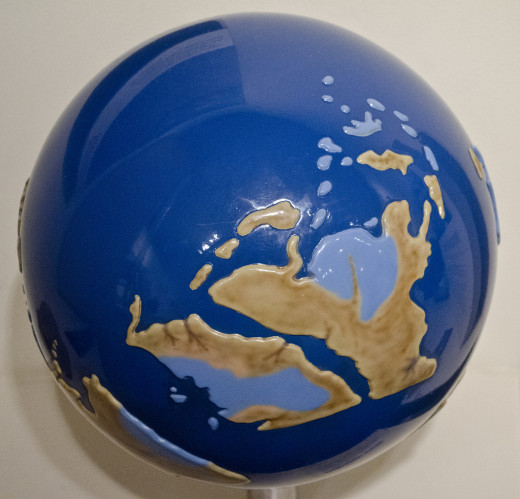
The Cambrian Explosion
The Earth is believed to be around 4.5 - 4.6 billion years old. Historically multicellular life similar to modern day design has occupied less than 10% of this duration.
The Paleozoic Era (meaning the “time of ancient life”) began around 542 million years ago and saw an incredible diversification in multicelled animal and plant life. It encompasses six geological time periods: The Cambrian (542 to 488.3 million years ago); the Ordovician (488.3 to 443.7 million years ago); the Silurian (443.7 to 416 million years ago); the Devonian (416 to 359.2 million years ago); the Carboniferous (359.2 to 299 million years ago); and the Permian (299 to 251 million years ago). This era in history ended with an event often known as the Permian Mass Extinction or The Great Dying, where more than 90% of the planet's species were wiped out.
It was previously believed that the first multicellular lifeforms to appear in the fossil record were trilobites and brachiopods dating as far back as 540 million years ago to the early Cambrian period. However it's now known that rocks containing the earliest animal fossils precede the Cambrian. Iconic species known to have originated even further back during the Ediacaran Era (635-542 million years ago) include soft-bodied fauna such as the dickinsonian, the charnia, the kimberella, the spriggina, the parvancorina, the cyclomedusa, the tribrachidium, the primochandelabrum, the acritarch and certain bacteria, plankton and algae.
'The Cambrian Explosion' occurred at the beginning of the Cambrian period and is known for a rapid and elaborate expansion of aquatic life and most major animals in the fossil record. Most animal life during the Cambrian inhabited the Earth's oceans. The rate of evolution and level of bio-diversification of marine and plant life that filled the oceans remains an unprecedented and unsurpassed period of evolutionary innovation on the planet.
The evolution and lineage of many modern day species can be traced back to animal life during the Cambrian Explosion. This period, for example, gave rise to the arthropods, a term used for invertebrates that have bilateral symmetry (the right side of the body is identical to the left side), segmented bodies, exoskeletons, and jointed legs. Ancient arthropods such as the Sanctacaris, Trilobite, Aglaspidida, Fuxianhuia and Odaraia are among the ancestors of modern day insects, myriapods (e.g. centipedes and millipedes), arachnids and crustaceans. More than 75% of animals (or over 800,000 species) on the planet are arthropods.
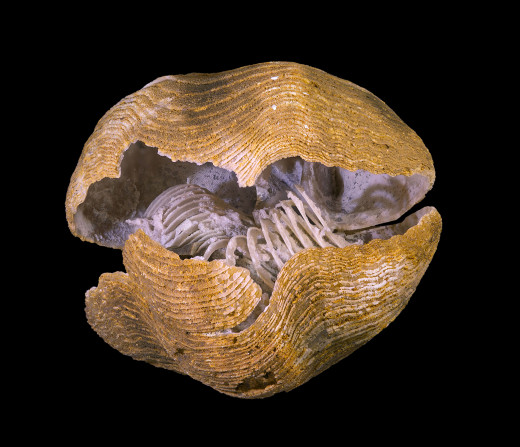
Creatures of the Cambrian
This period received its name in the 1830s by Adam Sedgewick, a pioneer in modern-day geology who had conducting fieldwork in Wales at the time. It was named after Cambria, which was the Latin name for Wales while under Roman rule.
The Cambrian is believed to have been preceded by an event knownas the 'Infra-Cambrian Ice Age'.
There's no certainty as to what sparked the biological boom during the Cambrian period, though researchers have suggested that it was probably due to the environment becoming more hospitable with a warming climate and rising sea levels that flooded low-lying landmasses to create shallow, marine habitats ideal for spawning new life. The emissions from photosynthesizing cyanobacteria and algae may have also adjusted the levels of oxygen in the atmosphere appropriately to fuel the growth of more complex body structures and living methods. The Cambrian Explosion is thought to have lasted around 5-10 million years.
Many strange creatures thrived during the Cambrian, many that are now of extinct lineages. These include (but definitely not limited to):
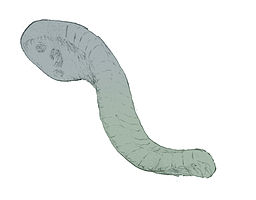
- The slug-like Odontogriphus, which appeared as small, flat, oval-shaped blob ranging from 48 to 125mm in length and around 43mm in width. The creature would have squirmed across the ocean's surface, scooping up algae and other food in a feeding apparatus that resembles a molluscan radula as well as a jaw similar to those of annelid worms. This creature is widely considered a possible ancestor for molluscs and various worms.
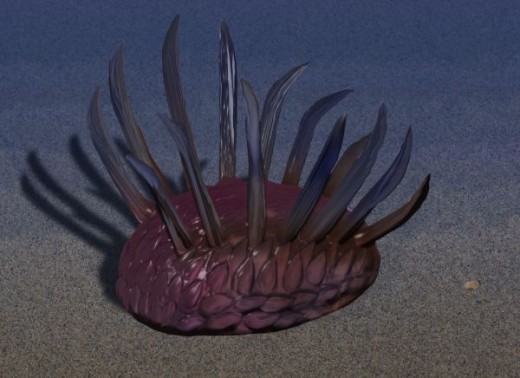
- Wiwaxia, which looked very much like a heavily armored slug with slecrite armor or hard plates and spikes covering its back.. Similar to the Odontogriphus, it moved across the ocean floor through muscular contractions of a slug-like foot that would have taken up most of its underside. It too had a radula similar to molluscs and annelids, though there is some debate on which lineage it belongs to.
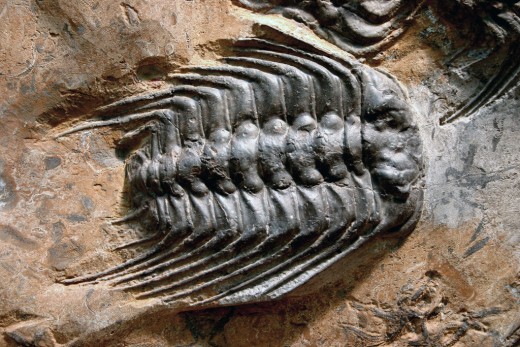
- Various types of Trilobites, some of the earliest arthropods which were typically characterized by their hard exoskeleton. Their size ranges from just a few centimeters in length to 70 cm and possibly more. Trilobites remain one of the most commonly found fossil from the Cambrian period and are widely believed to be ancestors to modern day crustaceans, insects and scorpions, with their closest ancestor being the horseshoe crab.
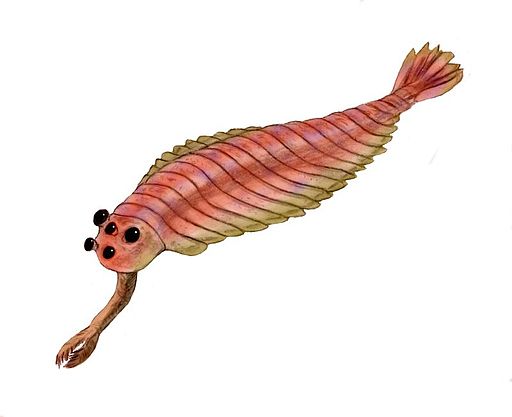
- Opabinia, a five-eyed marine animal with a flexible hose-like proboscis that it would have used to feed. This creature's appearance is considered so odd that when a reconstruction was presented by paleontologist Harry Whittington at a meeting in 1972, attendees burst into laughter. Despite it's crustacean-like appearance, it has no known descendants currently living or extinct.
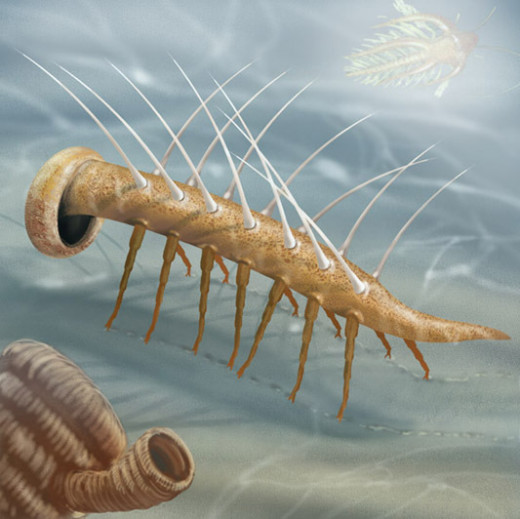
- The Hallucigenia which grew to around 30mm in length and known for its otherworldly appearance, with a distinctive tubular body, stilt like legs and long spines on its back. This enigmatic creature has baffled scientists for decades, since its fossils were initially reconstructed upside down and back to front. Often seen as an "evolutionary misfit" recent studies have found that it may actually be the ancestor to velvet worms.
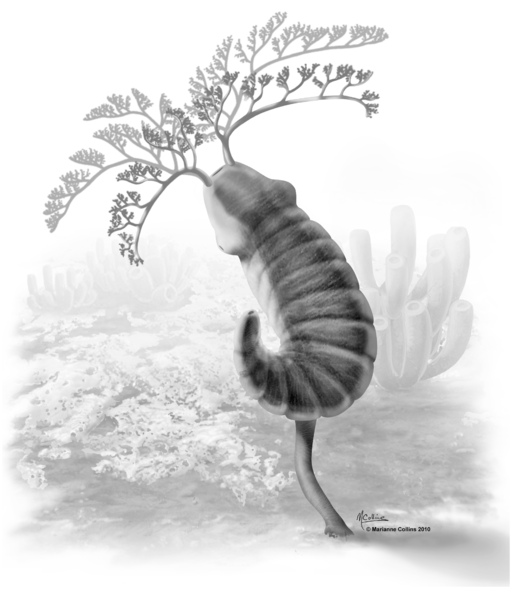
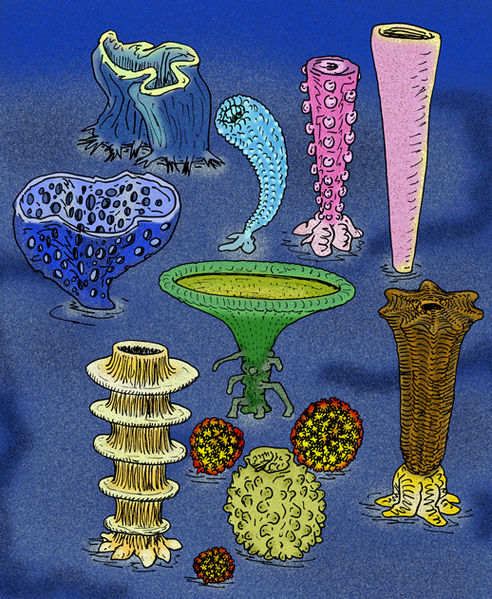
- The soft-bodied Herpetogaster, which has a name that translates from the Greek into the "creeping stomach", due to its large stomach and it's possible ability to creep using a stolon that sometimes exceeded the length of the main body and which and ended with a flat disk. This stolon seems to have been used to anchor it to the seabed or other organisms. Its tentacles may have been used to hunt small prey. It's believed to be the descendant of starfish and acorn worms.
- The sponge-like reef builders known as Archaeocyathids or "ancient cups" due to their shape, existed for 10-15 million years. In this time they built some of the first reefs, playing a crucial role for the biodiversity of the age and important habitats for other marine life. Some archaeocyathids lived as solitary organisms while others lived in colonies, thriving in tropical, shallow-waters of around 20-30 meters deep. The cause for their extinction is not fully understood, though some speculate that storms may have uprooted or buried them.
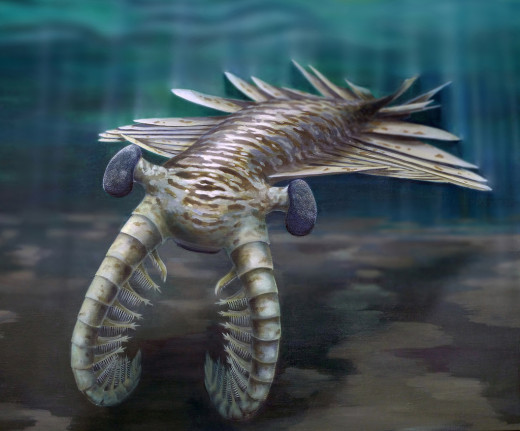
- The largest known predator during the Cambrian, the Anomalocaris (which means "strange shrimp"), an aquatic animal that undulated through the water by flexing its lobed body and used its giant shrimp-like limbs to capture and hold its prey. Though the average length for Anamalocaris is believed to be around 50-60cms, fossils of a related species have been found that reach up to 6 feet long. Anamalocaris is not known to have survived into the subsequent Ordovician period.
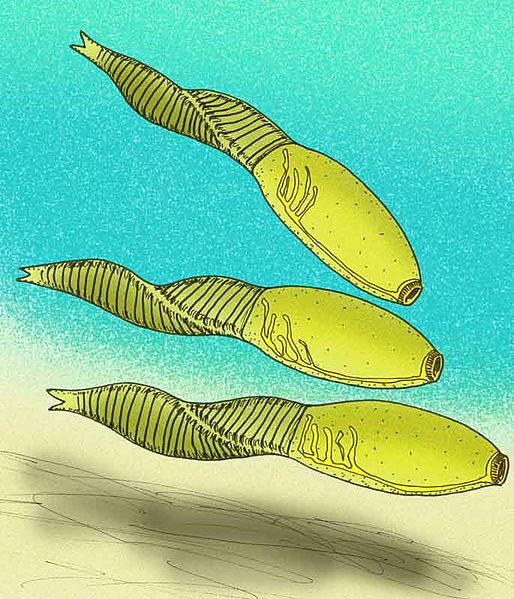
- The Banffia were one of the Cambrian's largest creatures, with some exceeding 10 cm. Fossils of this species are rare, though current analysis indicates that it was probably not a swimmer or efficient burrower and instead lived at the bottom of the sea in the mud, eating small particles of organic matter. Notably this enigmatic creature has no gills. There is no consensus among paleontologists on its classification or it's lineage, so it's ancestors remain unknown.
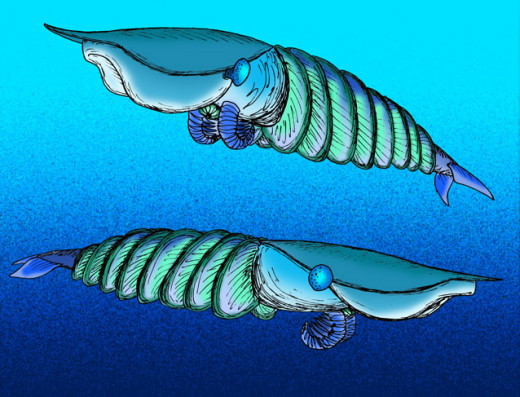
- The Hurdia, was a large top apex predator related to the Anomalocaris which could grow to around 500mm. It had a distinct three-part shell that protruded from its head and is unlike anything seen in other fossils or living arthropods. Researchers aren't sure what purpose this structure may have had as it was totally hollow, making it unpractical for protection.
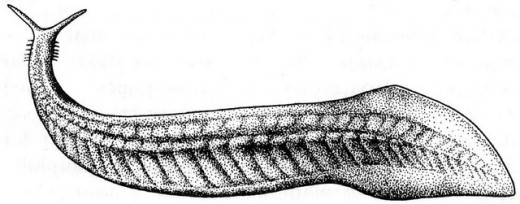
- The Pikaia, is the earliest known chordate animal. Resembling a lancelet, this animal reached around 4cm in length and had a notochord that ran from behind its head and extended almost to the tip of the body. The Pikaia is also potentially an ancestor to all vertebrates, which include, amphibians, birds, reptiles and mammals.
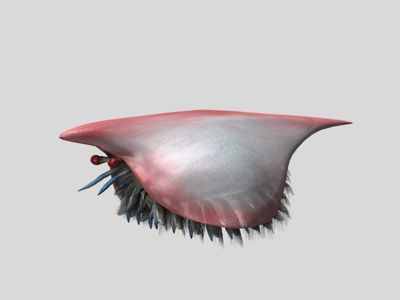
- The Isoxys was a free-swimming carnivore and predator that was abundantly common in tropical seas. Growing to around 40mm in length, it was characterized by a non-mineral carapace and a pair of large, bulbous, spherical eyes protruding from its body via short stalks. It may be related to euarthropods, which include myriapod (eg. millipedes), chelicerata (e.g. arachnids, horseshoe crabs), insects and crustaceans.
Three mass extinctions occurred towards the end of Cambrian period, having a massive impact on trilobites (the oldest species Olnellids went extinct during this time), brachiopods and conodonts (an eel-like chordate). Anomalies in the stable carbon isotopic record of carbonates indicate that these extinction events may have been driven by global glaciation.
Most of the specimens from the Cambrian Period have been found in the fossil beds at the Sirius Passet formation in Greenland; Chenjiang, China; and the Burgess Shale of British Columbia.
Other Recent Finds from the Era: Tamisiocaris borealis
This latest discovery by researchers in China was not the only recent development of note regarding Cambrian fossils. A study published in the science journal Nature on March 26 2014 by researchers from the United Kingdom and Denmark shed new light on a giant shrimp-like creature known as Tamisiocaris borealis, which lived in the oceans around 520 billion years ago. It belonged to a group of very early marine animals called the 'anomalocarids', a type of arthropod that were some of the largest, fearsome and iconic creatures of the Cambrian.
The researchers unearthed the new fossil evidence, including fragments of feeding appendages in 2009 at the Sirius Passet in North Greenland during a series of expeditions led by co-author David Harper. Harper says that other than the Tamisiocaris fossils, researchers found a large number of other ancient remains from strange animals that give a unique insight into the planet's first animal-based communities.
“The expeditions have unearthed a real treasure trove of new fossils in one of the remotest parts of the planet, and there are many new fossil animals still waiting to be described,” said Harper. “Our new understanding of this remarkable animal adds another piece to a fascinating jigsaw puzzle.”
The finding from the analyses negated previous belief that Tamisiocaris borealis was a tenacious top predator that grabbed and shoved prey into its large mouth. Instead the researchers suggested that the marine animal evolved into a suspension feeder, with its grasping appendages being replaced by a filtering apparatus that could be swept like a net through the water, trapping small crustaceans and other organisms.
“Tamisiocaris would have been a sweep net feeder, collecting particles in the fine mesh formed when it curled its appendage up against its mouth,” said co-author Dr Martin Stein of the University of Copenhagen. “This is a rare instance when you can actually say something concrete about the feeding ecology of these types of ancient creatures with some confidence.”
Co-author of the report Jakob Vinther describes these creatures as "the sharks and whales of the Cambrian era. In both sharks and whales, some species evolved into suspension feeders and became gigantic, slow-moving animals that in turn fed on the smallest animals in the water."
“It is unlikely that there was anything that hunted Tamisiocaris,” Vinther told Discovery News. “It was among the largest animals of its time. Therefore, it could calmly swim around and eat like a gentle giant without feeling the slightest hint of a threat, just like modern whale sharks (do today).”
The discovery of the Tamisiocaris fossils also help to highlight just how productive the Cambrian period was, with an insight into the ecosystems that existed hundreds of millions of years ago and how different species of anomalocaridids evolved during that time.
3D animation of Tamisiocaris borealis' filter-feeding motion.
Bibliography
- 'Ancient Creature Was a Miniature Monster', Livescience, March 19, 2009.
- Bagley, 'Cambrian Period: Facts and Information', Livescience, March 21, 2013.
- Broce J, Schiffbauer J.D, Sharma K.S, Wang G & Xiao S. 'Possible Animal Embryos from the Lower Cambrian (Stage 3) Shuijingtuo Formation, Hubei Province, South China', Journal of Paleontology 88(2):385-394, March. 2014
- Foster, J. Cambrian Ocean World: Ancient Sea Life of North America. Indiana, USA; Indiana University Press, 2014.
- Ghose T, 'Gigantic Cambrian Shrimplike Creature Unearthed in Greenland', Livescience, March 26, 2014.
- Gould S.J. Wonderful Life: The Burgess Shale and the Nature of History. London; Vintage, 2000.
- Harper, D. 'Scientists at work: revealing strange fossils from the first carnival of animals on Earth', The Conversation, 7 April 2014.
- Lewis, J. '500 Million-Year-Old Fossils Discovered Reveal Unknown Species', States Chronicles, April 15, 2014.
- National Geographic, 'Cambrian Period', Accessed April 2014.
- Pappas, S. '500-Million-Year-Old Embryos Fossilized in Rare Find', Livescience, April 14, 2014
- Smith, MR. 'Mouthparts of the Burgess Shale fossils Odontogriphus and Wiwaxia: implications for the ancestral molluscan radula'. Proceedings of the Royal Society B: Biological Sciences, 2012.
- Sossaman, J., 'MU Researchers Find Rare Fossilized Embryos More Than 500 Million Years Old', University of Missouri, News Bureau, April 10, 2014.
- 'The Cambrian Period', The University of California Museum of Paleontology. (Accessed in April 2014).
- University of Bristol 'Ancient sea creatures filtered food like modern whales', Press Release, 26 March 2014
- Viegas, J. 'Enormous Shrimp Was Gentle Giant of Cambrian Seas', News Discovery, March 26, 2014.
- Vinther J, Stein M, Longrich N.R, Harper D.AT. 'A suspension-feeding anomalocarid from the Early Cambrian' Nature, 507, 496–499 (27 March 2014).
- Zimmer, C. 'The Weird Youth of the Animal Kingdom (Slide Show)', National Geographic, February 18, 2013.

